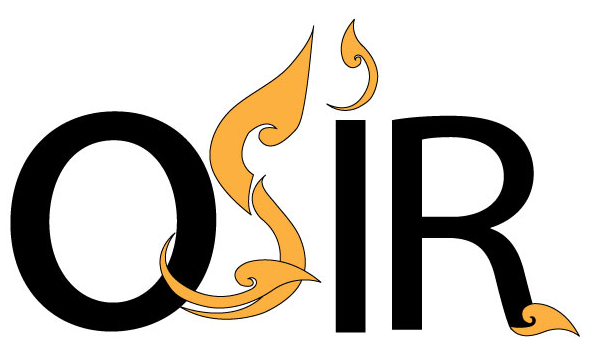Toward Optimizing Pertussis Detection During Outbreaks: A Comparison of National and High Epidemic Area Case Definitions in Narathiwat, Thailand, 2024
DOI:
https://doi.org/10.59096/osir.v18i1.270994Keywords:
pertussis, case definition, sensitivity, PPV, outbreak, low vaccine coverageAbstract
Pertussis remains a significant public health challenge in low-vaccination areas. This study described the characteristics of cases meeting the Narathiwat and national definitions and cases confirmed by reverse transcription polymerase chain reaction (RT-PCR) during the epidemic. It also assessed diagnostic accuracy of the definitions. A cross-sectional analysis utilized data from the Narathiwat Emergency Operations Center during September 2023 to May 2024. For the Narathiwat definition, a suspected case was a person with a cough lasting ≥1 week plus at least one symptom (i.e., paroxysmal cough, post-tussive vomiting, inspiratory whooping, or apnea), while the national definition required cough lasting ≥2 weeks. Among 486 cases, 171 met the Narathiwat definition, 107 met the national definition, and 208 met neither. RT-PCR confirmed cases were 47.9%, 57.9% and 30.8% among cases meeting the Narathiwat, national, and neither definitions, respectively. Timeliness of pertussis detection had a median of 9 days (interquartile range (IQR) 7.8–10 days) for the Narathiwat definition and 16 days (IQR 15–21 days) for the national definition. Paroxysmal cough had the highest detection rate by RT-PCR (84.6%) and was more common among RT-PCR positive cases compared to RT-PCR negative cases. The Narathiwat definition had a sensitivity of 39.4% and a positive predictive value (PPV) of 48.0%. The national definition had a lower sensitivity, 29.8%, but a higher PPV, 57.9%. A proposed alternative definition (cough ≥1 week, accompanied by paroxysmal cough) achieved a sensitivity of 37.5% and a PPV of 49.1%. Modifying the definition improved early outbreak detection during epidemics.
References
Centers for Disease Control and Prevention (US). Pertussis cases by country [Internet]. Atlanta (GA): Centers for Disease Control and Prevention; 2023 May [cited 2024 Feb 5].
World Health Organization. Pertussis [Internet]. Geneva: World Health Organization; [cited 2024 Feb 5]. <https://www.who.int/health-topics/pertussis#tab=tab_1>
World Health Organization. Recommended case classifications of pertussis [Internet]. Cairo: Regional Office for the Eastern Mediterranean, World Health Organization; 2024 [cited 2024 May 25]. <https://www.emro.who.int/health-topics/pertussis/disease-surveillance.html>
World Health Organization. Thailand case study: school vaccination checks [Internet]. Geneva: World Health Organization; [cited 2024 Feb 7]. 11 p. <https://cdn.who.int/media/docs/default-source/immunization/school-vaccination/case_study_report-school_vaccination_checks-thailand_final.pdf?sfvrsn=ac97da26_3>
Division of Epidemiology, Department of Disease Control, Ministry of Public Health (TH). Annual epidemiological surveillance report 2019 [Internet]. Nonthaburi: Department of Disease Control, Ministry of Public Health; [cited 2024 Feb 12]. <https://apps-doe.moph.go.th/boeeng/download/MIX_AESR_2562.pdf>
Division of Epidemiology, Department of Disease Control. Case definition for communicable diseases surveillance, Thailand, 2020 [Internet]. Nonthaburi: Division of Epidemiology, Department of Disease Control; 2020 [cited 2024 Aug 10]. <http://klb.ddc.moph.go.th/dataentry/handbook/form/113>
Microsoft Corporation. Microsoft excel. Redmond (WA): Microsoft Corporation; 2016.
R Development Core Team. R Project for statistical computing. Version 4.2.1. Vienna: R Foundation; 2022.
Shreffler J, Huecker MR. Diagnostic testing accuracy: Sensitivity, specificity, predictive values and likelihood ratios [Internet]. In: StatPearls. Treasure Island (FL): StatPearls Publishing; [updated 2023 Mar 6; cited 2024 Apr 21]. <https://www.ncbi.nlm.nih.gov/books/NBK557491/>
Cherry JD, Tan T, Wirsing von Konig CH, Forsyth KD, Thisyakorn U, Greenberg D, et al. Clinical definitions of pertussis: summary of a global pertussis initiative roundtable meeting. Clin Infect Dis. 2012 Jun;54(12):1756–64. doi:10.1093/cid/cis302.
Ghanaie RM, Karimi A, Sadeghi H, Esteghamti A, Falah F, Armin S, et al. Sensitivity and specificity of the World Health Organization pertussis clinical case definition. Int J Infect Dis. 2010 Dec;14(12):e1072–5. doi:10.1016/j.ijid.2010.07.005.
Wu DX, Chen Q, Yao KH, Li L, Shi W, Ke JW, et al. Pertussis detection in children with cough of any duration. BMC Pediatr. 2019 Jul 12;19(1):236. doi: 10.1186/s12887-019-1615-3.
Muloiwa R, Nicol MP, Hussey GD, Zar HJ. Diagnostic limitations of clinical case definitions of pertussis in infants and children with severe lower respiratory tract infection. PLoS One. 2020 Jul 17;15(7):e0235703. doi:10.1371/journal.pone.0235703.
Fry NK, Campbell H, Amirthalingam G. JMM Profile: Bordetella pertussis and whooping cough (pertussis): still a significant cause of infant morbidity and mortality, but vaccine-preventable. J Med Microbiol. 2021 Oct;70(10):001442. doi:10.1099/jmm.0.001442.
Teng MS, Wang NE. Whooping cough: management and diagnosis of pertussis [Internet]. Morrisville (NC): Relias Media; 2011 May 1 [cited 2024 May 30]. <https://www.reliasmedia.com/articles/130291-whooping-cough-management-and-diagnosis-of-pertussis>
Centers for Disease Control and Prevention (US). Clinical Features of pertussis [Internet]. Atlanta (GA): Centers for Disease Control and Prevention; 2024 Apr 2 [cited 2024 May 5]. <https://www.cdc.gov/pertussis/hcp/clinical-signs/index.html>
Ristic M, Radosavljevie B, Stojanovic VD, Dilas M, Petrovic V. Performance of the new clinical case definitions of pertussis in pertussis suspected infection and other diagnoses similar to pertussis. PLoS One. 2018 Sep 20;13(9):e0204103. doi:10.1371/journal.pone.0204103.
Lee AD, Cassiday PK, Pawloski LC, Tatti KM, Martin MD, et al. Clinical evaluation and validation of laboratory methods for the diagnosis of Bordetella pertussis infection: Culture, polymerase chain reaction (PCR) and anti-pertussis toxin IgG serology (IgG-PT). PLoS One. 2018 Apr 13;13(4):e0195979. doi:10.1371/journal.pone.0195979.
Patriarca PA, Biellik RJ, Sanden G, Burstyn DG, Mitchell PD, Silverman PR, et al. Sensitivity and specificity of clinical case definitions for pertussis. Am J Public Health. 1988 Jul;78(7):833–6. doi:10.2105/ajph.78.7.833.
Downloads
Published
How to Cite
Issue
Section
License
Copyright (c) 2025 Outbreak, Surveillance, Investigation & Response (OSIR) Journal

This work is licensed under a Creative Commons Attribution-NonCommercial-NoDerivatives 4.0 International License.









